Good morning friend stemian this is my post today about morphology in corn plant.
Corn crops belong to the grass family (graminae) of the myadeae subfamily. Two families adjacent to maize are teosinte and tripsacum that are thought to be the origin of corn crops. Teosinte comes from Mexico and Guatemala as wild plants in the corn crop area.
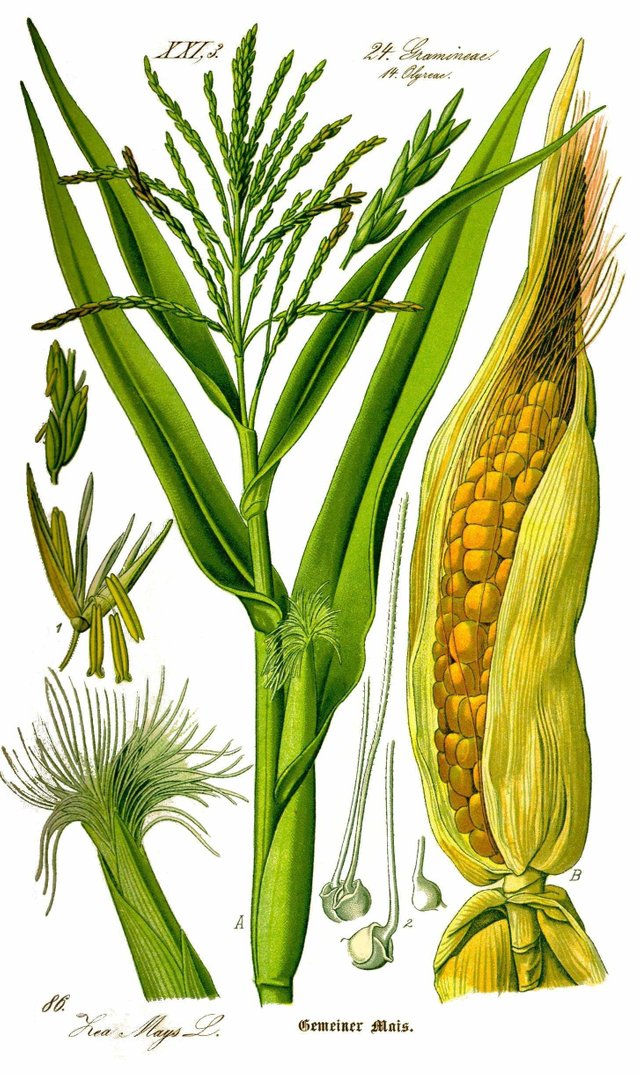
EXPERT SYSTEM
Corn has fiber roots with three kinds of roots, namely (a) a seminal root, (b) an adventitious root, and (c) a hook or buffer root. Seminal roots are the roots that develop from radicles and embryos. The growth of the seminal roots will slow down after the plumula appears to the soil surface and the growth of the seminal roots will stop at phase V3. The adventitious root is the root that originally developed from the book at the end of the mesokotil, then the set of adventitious roots evolved from each book sequentially and continued upwards between 7-10 books, all below ground level. An adventitious root develops into a thick root fiber. The seminal roots play little role in the life cycle of maize. Adventitious roots play a role in the taking of water and nutrients. The total weight of the root of the maize consists of 52% of the seminal adventif roots and 48% nodal roots. The root of the hook or buffer is an adventitious root that appears in two or three books above the ground. The function of the root buffer is to keep the plant upright and overcome the fall of the stem. This root also helps the absorption of nutrients and water
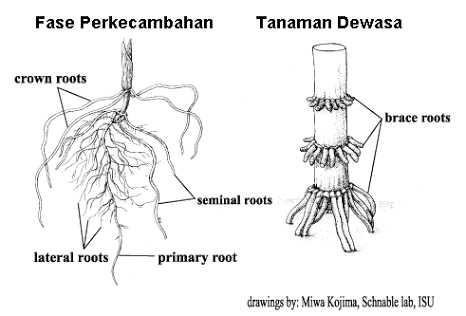
The development of maize roots (depth and spreading) depends on the soil, soil, physical and chemical varieties, soil and soil chemistry, groundwater conditions, and fertilization. Corn roots can be used as an indicator of tolerance of plants against aluminum stress. Plants are aluminum tolerant, their roots are cut off and have no root feathers Nitrogen fertilization with different doses causes different development (plasticity) of root root system (Smith et al., 1995).
RODS AND LEAVES
Corn plants have unbranched stems, cylindrical, and consist of a number of segments and books of segments. In the book seguas there are shoots that develop into cob. The top two buds develop into a productive cob.
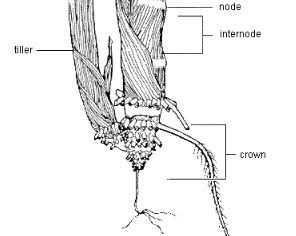
has three main tissue components, namely skin (epidermis), vascular tissue (vascular bundles), and center of stem (pith). Vascular bundles are arranged in concentric circles with high density bundles, and circles to the pericarp near the epidermis. The density of the bundles decreases as it approaches the center of the stem. The high concentration of vascular bundles beneath the epidermis causes the resistant crop to collapse. Genotypes of maize with strong rods have more layers of thick-walled sclerenchyma tissue under the stem epidermis and around the vascular bundles (Paliwal 2000). There are variations of antargenotype skin thickness that can be used for selection of plant tolerance to stem fracture.
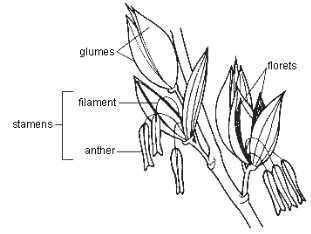
After the coleoptile appears above the ground, the corn leaves begin to open. Each leaf consists of leaf strands, ligula, and leaf midrib which is closely attached to the stem. The number of leaves is equal to the number of stem books. The number of leaves generally ranges from 10-18 strands, the average appearance of a perfectly open leaf is 3-4 days per leaf. Corn plants in the tropics have relatively more leaves than in temperate climates (Paliwal 2000). The genotypes of maize vary in length, width, thickness, angle, and color of leaf pigmentation. The width of the leaf blade is categorized from very narrow (<5 cm), narrow (5.1-7 cm), medium (7.1-9 cm), width (9.1-11 cm), to very wide (> 11 cm).
Large leaf angle affect leaf type. Cornstarch angles also vary, ranging from very small to very large (Figure 1). Some genotypes of maize have antocyanins in their leaves, which may be present on leaf edges or leaf bones. The intensity of the antocyanin color on the leaf midrib varies, from very weak to very strong.
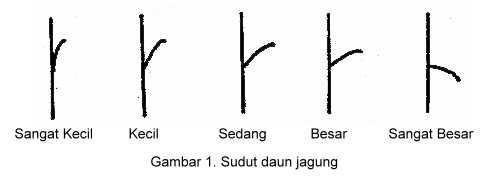
The shape of the tip of the corn leaf is different, ie pointed, pointed slightly round, round, rounded rather dull, and blunt (Figure 2). Based on the location of the leaf position (leaf angle) there are two types of maize leaves, namely erect (erect) and pendant. Leaves erect usually have a corner between small to medium, leaf pattern can be straight or crooked. Pendant leaves generally have wide angles and leaf patterns vary from straight to very bent. Corn with leaf type erect has a small canopy that can be planted with a high population. The high crop density is expected to produce high yields as well.

FLOWER
Corn is also called one-house plants (monoeciuos) because the male and female flowers are present in one plant. Female flowers, tuna, appear from axillary apices of the canopy. The male flower (tassel) develops from the apical growing point at the end of the plant. In the early stages, both flowers have primordia bisexual flowers during the process
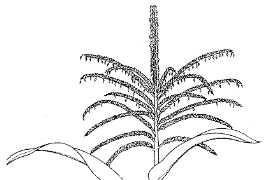
development, primordia stamen on axillary flowers do not develop and become a female flower. Similarly, primordia ginaecium in apical flowers, does not develop and becomes a male flower (Palliwal 2000). Pollen (pollen) is trinukleat. Pollen has a vegetative cell, two male gametes and contains starch granules. The thick walls are formed from two layers, exine and intin, and quite hard. Due to differences in the development of flowers on the male spikelet above and below and the mature spike sync, the pollen ruptures continuously from each tassel within a week or more.
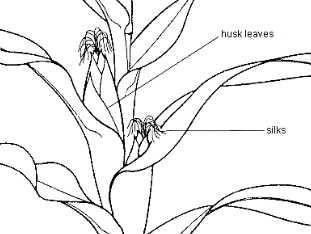
Corn hair (silk) is an elongation of the ovary stylar channels that mature on the tuna. Corn hair grows to a length of 30.5 cm or more so that it comes out of the tip of the kelobot. The length of the corn hair depends on the length of the cob and the kelobot
Maize is protandry, where in most varieties, the male flowers appear (anthesis) 1-3 days before the female flower hair appears (silking). Pollen (pollen) is released from the spikelet located on the middle spike, 2-3 cm from the tip of the panicle (tassel), then down to the bottom. One ear of anther releases 15-30 million pollen. The pollen is very light and falls due to gravity or is blowing in the wind causing cross-pollination. In a state of stress (stress) due to lack of water, hair loss may be delayed, while the panicle release is not affected. The interval between the discharge of female flowers and male flowers (anthesis silking interval, breast milk) is very important. Small milk indicates a flowering synchronization, which means that the chances of the occurrence of pure pollination are enormous. The greater the value of breastfeeding the smaller the synchronization of flowering and pollination is hampered resulting in lower yield. Abiotic stress generally affects breast milk values, such as in drought stress and high temperature.

Pollination in maize occurs when the pollen from male flowers is attached to the cob's hair. Nearly 95% of the persuasion comes from other plant pollen, and only 5% comes from the plant pollen itself. Therefore, corn crops are called cross pollinated crops, where most of the pollen comes from other plants. The presence of pollen lasts 3-6 days, depending on the variety, temperature, and humidity. Tuna hair remains receptive in 3-8 days. The pollen is still viable within 4-16 hours after shedding. Pollination is complete within 24-36 hours and seeds begin to form after 10-15 days. After pollination, the hair color of the cob turns brown and then dries.
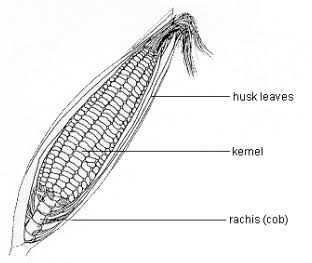
COBS AND SEEDS
Corn plants have one or two cobs, depending on the variety. Corn cobs are covered by the leaves of kelobot. Corn cobs located at the top are generally first formed and larger than those located at the bottom. Each cob consists of 10-16 rows of seeds whose numbers are always even.
Corn kernels are called kariopsis, the ovarian wall or pericarp together with the skin of the seed or testa, forming a fruit wall. The corn seeds consist of three main parts, namely (a) pericarp, a thin outer layer, preventing the embryo from disturbing organisms and water loss; (b) endosperm, as food reserves, reaching 75% of seed weight containing 90% starch and 10% protein, minerals, oils, and others; and (c) embryo (institution), as a miniature plant consisting of plamule, radical root, scoot, and koleoptil (Hardman and Gunsolus 1998).

The endosperm starch is composed of an anhydroglucose compound consisting mostly of two molecules, amylose and amylopectin, and a small part of the intermediate material (White 1994). But in some types of corn there is a variation in the proportion of amylose and amylopectin content. Corn endosperm proteins consist of several fractions, based on their solubility classified into albumin (soluble in water), globumin (soluble in saline solution), zein or prolamin (soluble in high concentration alcohol), and glutein (soluble in alkali). In most maize, the proportion of each protein fraction is 3% albumin, 3% globulin, 60% prolamin, and 34% glutein (Vasal 1994)
SOURCE REFERENCE
http://agroteknologi.web.id/klasifikasi-dan-morfologi-tanaman-jagung/
http://fredikurniawan.com/morfologi-tanaman-jagung/
https://sustainablemovement.wordpress.com/2011/12/27/anatomi-dan-morfologi-tanaman-jagung/amp/
This is my post at this time morphology of corn crop .. If friend steemit likes my post please follow me continuously and vote and resteem
@sahlan89